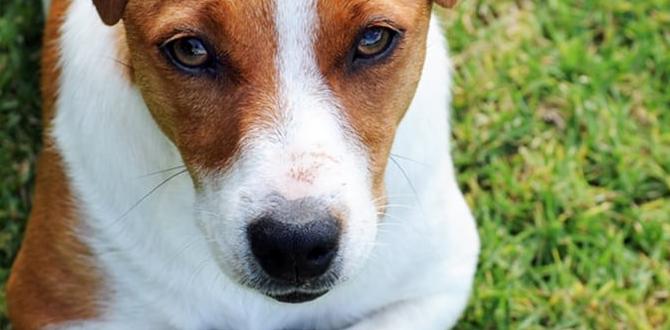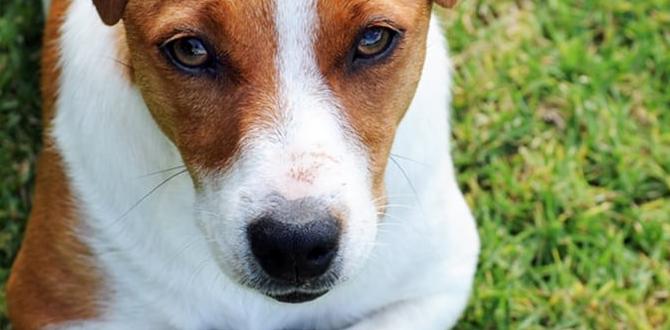Dog humping behavior is common and can be managed. Understanding the triggers – excitement, stress, play, or even medical issues – is key. This guide offers proven solutions, from redirection and training to addressing underlying anxieties, helping you create a calmer environment for your dog and household.
It’s a situation many dog owners have encountered, and it can bring a mix of confusion, embarrassment, and frustration: your dog is humping. Whether it’s another dog, a person, or even a piece of furniture, this behavior can be unexpected and frankly, a bit awkward. But here’s the good news: you’re not alone, and there are effective ways to address it. Understanding why dogs hump is the first step towards finding solutions that work for your furry friend and your family. Let’s dive into the reasons behind this canine behavior and explore practical, step-by-step advice that will help you manage it.
Why Do Dogs Hump? Understanding the Behavior
Humping behavior in dogs, scientifically known as mounting, is often misunderstood. Many people immediately associate it with sexual urges. While that can be a factor for intact dogs, it’s far from the only reason. Dogs hump for a variety of reasons, reflecting a complex interplay of emotions, social cues, and even physical sensations. Recognizing these underlying causes is crucial for choosing the right strategies.
Excitement and Overstimulation
Sometimes, a dog might hump when they are feeling overly excited or stimulated. Think about a party with lots of people and other dogs, or a particularly engaging play session. This surge of energy can manifest as humping, especially in younger dogs still learning to regulate their emotions. It’s their way of releasing pent-up energy in a situation they find overwhelming.
Play Behavior
Mounting can also be a component of roughhousing or play, particularly among puppies and adolescent dogs. They might playfully mount each other as they explore social dynamics and practice their canine communication skills. It’s often a brief, interrupted action within a larger game. When this continues beyond playful nudges, it can signal a need for intervention.
Stress and Anxiety
Surprisingly, humping can be a stress signal. A dog who is anxious, insecure, or feeling stressed in a particular environment might hump as a displacement behavior. This means they are doing something inappropriate because they are uncomfortable with the situation. Changes in routine, new people or pets, or a general feeling of unease can trigger this response. It’s their way of trying to regain a sense of control or distract themselves from what’s bothering them.
Social Dominance (A Common Misconception)
The idea of “social dominance” as the primary driver of humping is largely an outdated concept in modern canine behavior science. While subtle social cues exist, humping isn’t necessarily about asserting dominance. Instead, it can be a way for a dog to interact, get attention, or even try to de-escalate a situation they perceive as tense. Focusing solely on dominance can lead to incorrect training approaches.
Medical Reasons
Less commonly, humping can be linked to underlying medical issues. Urinary tract infections, skin allergies causing itching, or even neurological conditions can sometimes manifest as humping behavior. If the humping is a sudden new behavior, has increased dramatically, or is accompanied by other symptoms like excessive licking or discomfort, a veterinary check-up is always a good idea.
Attention Seeking
Dogs are smart, and they learn what gets a reaction! If a dog humps and their owner immediately rushes over, talks to them, or physically moves them, the dog might learn that humping is a reliable way to get human attention. Even negative attention is still attention for many dogs.
Expert Advice: Proven Solutions for Dog Humping Behavior
Addressing humping behavior involves understanding the WHY and then implementing consistent, positive strategies. The goal is to redirect your dog’s energy and teach them more appropriate responses. Here are proven solutions you can start using today.
1. Immediate Interruption and Redirection
The most effective immediate strategy is to calmly interrupt the behavior and then redirect your dog’s attention to something else. Consistency is key here.
How to Do It:
- Calmly Interrupt: When you see your dog starting to hump, don’t yell or punish. Instead, use a gentle, firm sound or word to interrupt them. A simple “Ah-ah” or a quick, gentle touch on their side can work.
- Redirect to an Activity: As soon as they stop, immediately engage them in a more appropriate activity. This could be a quick training session with commands they know (sit, stay, come), throwing a favorite toy for them to fetch, or offering a puzzle feeder.
- End on a Positive Note: Ensure the redirection is successful and enjoyable for your dog. This reinforces that good things happen when they stop the humping and engage in the new activity.
This method teaches your dog that humping stops fun activities, while engaging in a new behavior leads to rewards and attention. It’s about showing them what to do, rather than just punishing what they shouldn’t.
2. Managing the Environment
Sometimes, the best approach is to prevent the behavior from happening in the first place by managing your dog’s environment, especially during periods or situations where humping is more likely to occur.
When to Manage:
- Visitors in the Home: If your dog tends to hump guests, keep them on a leash or behind a baby gate when visitors arrive, until everyone has settled and your dog is calmer.
- Other Dogs: If humping occurs during dog playdates or at the dog park, be ready to step in to separate dogs if the play becomes too intense or leads to humping.
- High-Energy Situations: During parties or busy family gatherings, consider giving your dog a safe space like their crate with a special chew toy, or a quiet room where they can relax away from the stimulation.
Managing the environment doesn’t mean your dog can never be in these situations; it means you’re helping them succeed by reducing opportunities for unwanted behavior while they are learning to control themselves.
3. Increased Physical and Mental Exercise
A tired dog is a well-behaved dog! Many humping behaviors stem from excess energy. Ensure your dog is getting enough appropriate outlets for their physical and mental energy.
Exercise Tips:
- Daily Walks: Aim for at least one to two good walks per day, tailored to your dog’s breed, age, and health.
- Playtime: Engage in active play sessions like Fetch, Tug-of-War (with rules!), or flirt pole games.
- Mental Stimulation: This is just as important as physical exercise. Use puzzle toys, food dispensing toys, scent games, and short training sessions to keep their mind engaged.
- Training Classes: Enrolling in obedience classes or agility courses provides both physical activity and mental challenges in a controlled environment.
By meeting your dog’s exercise needs, you reduce their innate drive to seek out less desirable ways to expend energy, such as humping.
4. Positive Reinforcement Training
Teaching your dog alternative behaviors can be incredibly effective. Focus on rewarding desired behaviors when your dog is calm and engaging appropriately.
Training Strategies:
- “Leave It” Command: This is invaluable. When your dog starts to fixate on something they might hump, use “Leave It” to redirect their attention. “The ‘Leave It’ command is a cornerstone of positive reinforcement training, teaching dogs to disengage from tempting items or behaviors,” says the ASPCA.
- “Go to Mat/Place” Command: Teach your dog to go to a specific mat or bed and stay there. This is excellent for calming them down during exciting moments.
- Reinforce Calm Behavior: Simply reward your dog with praise, a gentle pet, or a small treat when they are lying down calmly, interacting gently with others, or simply not humping.
The key is to make desired behaviors more rewarding than humping.
5. Addressing Underlying Anxiety or Stress
If you suspect humping is due to anxiety or stress, you’ll need a strategy that focuses on building your dog’s confidence and sense of security.
Steps to Reduce Anxiety:
- Identify Triggers: Observe your dog’s body language and the situations that precede humping. What are they reacting to? Loud noises? Strangers? Other dogs?
- Desensitization and Counter-Conditioning (DSCC): This expert-led approach involves gradually exposing your dog to their triggers at a low intensity while pairing it with positive experiences (like treats or praise). For example, if a dog is anxious around other dogs, you might start by having them see another dog at a very far distance (where they don’t react) while giving them high-value treats. Gradually, you reduce the distance. This should ideally be done with guidance from a certified professional dog trainer or veterinary behaviorist.
- Create a Safe Space: Ensure your dog has a comfortable, quiet den-like area where they can retreat and feel secure, especially during stressful times.
- Consider Calming Aids: For some dogs, pheromone diffusers (like Adaptil), calming chews, or anxiety-reducing supplements (formulated specifically for dogs and recommended by your vet) can be helpful additions to a behavior modification plan.
- Consult Professionals: If anxiety is severe, don’t hesitate to seek help from a certified professional dog trainer (CPDT-KA/SA) or a veterinary behaviorist. They can assess the situation and provide tailored strategies, which might include medication in some cases. The American Veterinary Society of Animal Behavior (AVSAB) emphasizes the importance of professional guidance for anxiety-related behaviors.
Building trust and providing a predictable, safe environment are paramount when addressing anxiety-driven humping.
6. Spaying/Neutering and Medical Checks
For intact male dogs, humping can sometimes be driven by hormones, especially around females in heat. While spaying or neutering doesn’t always eliminate humping (as it can become a learned behavior or linked to other drives), it can reduce or eliminate hormone-driven mounting.
Important Considerations:
- Consult Your Vet: Discuss spaying or neutering with your veterinarian. They can advise on the best timing and potential behavior impacts for your specific dog.
- Behavioral Impact: Remember that even after neutering, a dog might continue humping if it has become a habitual behavior or is linked to excitement, stress, or play. It requires behavioral training alongside possible medical intervention.
- Rule Out Medical Issues: As mentioned, a vet check is crucial to rule out any underlying physical or medical conditions that could be contributing to the humping.
Your veterinarian is your best resource for determining if medical factors or sterilization play a role in your dog’s humping behavior.
7. Socialization (The Right Way)
Proper socialization is vital for puppies and young dogs to learn appropriate social skills. This helps them understand how to interact with other dogs and people appropriately, reducing instances of humping driven by confusion or over-excitement.
Socialization Practices:
- Puppy Socialization Classes: These classes, run by qualified trainers, provide carefully supervised interactions with other puppies in a safe environment.
- Controlled Playdates: Arrange playdates with known, well-socialized adult dogs or calm, friendly dogs of similar size and energy levels.
- Positive Exposure: Gradually expose your dog to various sights, sounds, people, and environments in a positive way, ensuring they never feel overwhelmed.
Good socialization teaches dogs boundaries and confidence, which can naturally decrease humping behaviors that stem from social awkwardness or over-arousal.
When to Seek Professional Help
While many humping behaviors can be managed with consistent training and environmental management, there are times when professional guidance is invaluable.
- Sudden Onset or Increase: If humping is a new behavior and appears suddenly or has drastically increased, medical causes should be ruled out by a veterinarian first.
- Aggression is Present: If the humping is accompanied by growling, snapping, stiff body language, or other signs of aggression towards the object or person being humped, this is a serious concern that requires immediate professional intervention.
- Lack of Progress: If you have been consistently applying training methods for several weeks and are not seeing improvement, a certified professional dog trainer or a veterinary behaviorist can offer expert insight and personalized plans.
- Severe Anxiety or Fear: If humping is clearly a sign of significant stress, anxiety, or fear, professional help is crucial for implementing effective desensitization and counter-conditioning protocols.
Don’t hesitate to reach out to your veterinarian or a qualified professional. They are there to support you and your dog in navigating challenging behaviors.
Common Scenarios and Solutions
Let’s look at some everyday situations where humping might occur and how to apply these strategies.
Scenario 1: Humping During Play with Another Dog
This is very common. The play might be so exciting that one or both dogs start humping. It can quickly escalate and make the other owner feel uncomfortable.
Proven Solution:
- On-Leash: Keep your dogs on leashes during initial introductions or if play gets too rough. If humping starts, gently reel your dog in and redirect their attention with a cue or a quick game of fetch.
- Off-Leash: Be ready to intervene. If humping starts, calmly call your dog away, give them a short break, or engage them in a different activity. You can also teach them a “break” cue that signals they need to disengage.
- Pre-emptive Management: If you know a certain dog friend tends to get over-excited, ensure your dog has had enough exercise beforehand and keep the play sessions shorter and more controlled.
Scenario 2: Humping a Person’s Leg
This can happen when a dog is excited to see someone, during petting, or when they are feeling generally overstimulated.
Proven Solution:
- “Off” or “Leave It” Command: Teach your dog to disengage from your leg or the person’s leg.
- Redirection: As soon as they stop, immediately offer them a toy or ask for a sit/down.
- Visitor Briefing: Let visitors know beforehand that if your dog humps, they should calmly disengage, stand still (without pushing the dog away), and wait for you to redirect. This removes the “reward” of attention or physical interaction.
- Manage Energy: Ensure your dog isn’t overly excited when visitors arrive. Greet them calmly, and if your dog is too amped, have them stay on a mat or in another room until they can greet more appropriately.
Scenario 3: Humping Furniture or Objects
This can be a sign of boredom, excess energy, or even a self-soothing behavior.
Proven Solution:
- Increase Exercise: Ensure their physical and mental needs are being met. More walks, playtime, and puzzle toys can make a huge difference.
- Provide Appropriate Chew Toys: Offer a variety of safe and engaging chew toys your dog is allowed to ‘hump’ or ‘mount’ instead of furniture.
- “Leave It” and Redirection: Use “Leave It” when they fixate on the furniture, and then redirect to a toy or training exercise.
- Supervision: Supervise your dog when they have access to furniture, especially if this is a new behavior.
Scenario 4: Humping in a New Environment
A dog might hump due to anxiety or overstimulation in an unfamiliar place.
Proven Solution:
- Calm Introduction: When entering a new space, keep your dog on a leash and allow them to explore calmly. Avoid overwhelming them with too much interaction immediately.
- Provide a Safe Space: If possible, set up a familiar bed or crate in a quiet corner where they can retreat.
- Reinforce Calm Behavior: Reward them for calm exploration and relaxation.
- Gradual Exposure: Don’t force them into overwhelming situations. Gradually expose them to the new environment and interactions.
Remember, consistency in your approach across all scenarios is your strongest tool.
FAQs About Dog Humping Behavior
1. Is humping always sexual?
No! While intact dogs can hump due to hormones, humping is very often related to excitement, stress, anxiety, play, or attention-seeking. It’s rarely just about sex, even in intact dogs.
2. My dog humps my leg when I get home. How do I stop it?
This is likely excitement. When you come home, ignore your dog for the first few minutes until they calm down, then greet them calmly. If humping starts, calmly step away (removing the reward of your attention) and redirect them to a toy or a simple cue like “sit” once they are calmer. Consistently redirecting and rewarding calm greetings will help.
3. What if my dog humps furniture?
This often points to boredom, stress, or excess energy. Ensure your dog is getting enough physical exercise and mental stimulation daily. Provide plenty of appropriate chew toys. Use “leave it” and redirect their attention to a toy or training exercise when they begin to hump furniture.
4. Should I punish my dog for humping?
Punishment is generally not recommended as it can create fear, anxiety, and confusion, potentially worsening the behavior or leading to new problems. Focus on calmly interrupting, redirecting, and rewarding positive alternatives. Understanding the underlying cause is much more effective than punishment.
5. My female dog humps. Does this mean she’s pregnant?
No, a female dog humping does not indicate pregnancy. Like male dogs, female dogs can hump for reasons of excitement, stress, play, or seeking attention. It’s a common behavior across genders.
6. Will neutering stop humping?
Neutering can reduce or eliminate humping behavior in some male dogs if hormones are the primary driver. However, if humping has become a learned behavior, a habit due to excitement, or a response to stress, it may continue even after neutering. Behavioral training and management are still essential.
7. How quickly can I expect to see results?
Results can vary greatly depending on the dog, the cause of the humping, and the consistency of your training. For simple excitement-based humping with consistent redirection, you might see improvement within a few days. For more deeply rooted issues like anxiety, it can take weeks or months of dedicated effort. Patience and consistency are key.
Conclusion: Building a Calmer Companion
Watching your dog engage in humping behavior can be a puzzling experience, but it’s a common one that many loving pet parents navigate. The most important takeaway is that this behavior doesn’t define your dog, and with the right approach, you can effectively manage and reduce it. By understanding the diverse reasons behind humping—from joyous excitement at a party to underlying anxieties—you’re empowered to apply the most suitable solutions.
Remember, consistency is your superpower. Calmly interrupting the behavior, redirecting your dog’s energy towards positive activities, ensuring they receive adequate physical and mental exercise, and managing their environment are proven strategies. For more complex cases, seeking guidance from your veterinarian or a certified professional trainer ensures you have a tailored plan.
Your journey with your dog is one of continuous learning and building a stronger bond. By addressing behaviors like humping with patience, understanding, and positive techniques, you’re not just managing a behavior; you’re fostering a more confident, secure, and well-adjusted companion. With these proven solutions, you’re well on your way to creating a calmer, happier home for both you and your beloved dog. Happy training!
Meet Elyse Colburn, the devoted canine companion and storyteller behind the enchanting world of “Tales, Tails, and Adventures Unleashed.” A passionate dog enthusiast with a heart full of paw prints, Elyse Colburn shares heartwarming tales and insightful adventures, celebrating the joy, loyalty, and endless antics that make every dog a true hero. Join Elyse Colburn on this tail-wagging journey, where every post is a love letter to our four-legged friends.






